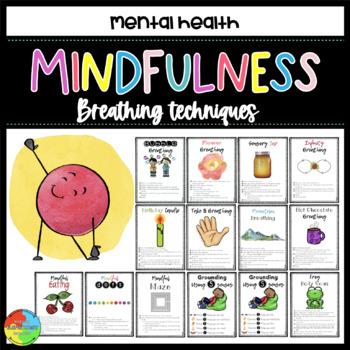In the hustle and bustle of modern life, finding a moment of peace can often feel like searching for a needle in a haystack. Yet, nestled within the chaos, lies a simple, transformative practice that promises serenity and balance: meditation. For those just beginning their journey into the world of mindfulness, self-guided meditation exercises offer a gentle introduction, providing the tools to cultivate inner calm and clarity without the need for an expert guide. This article will explore the art of self-guided meditation, offering beginners a pathway to unlock the tranquility that resides within. Whether you’re seeking to reduce stress, enhance focus, or simply carve out a few moments of peace in your day, these exercises will serve as your personal guide to a more mindful existence.
Finding Your Calm: The Basics of Self-Guided Meditation
Embarking on the journey of self-guided meditation can be both empowering and transformative. As you delve into this practice, consider creating a serene space that invites peace and tranquility. This can be as simple as a quiet corner in your home or a spot in your garden. Set the mood with soft lighting or a candle, and perhaps a gentle aroma that helps ease you into a meditative state.
- Breath Awareness: Begin by focusing on your breath. Inhale deeply through your nose, hold for a moment, and exhale slowly through your mouth. Feel the rise and fall of your chest, allowing your breath to guide you into a deeper state of relaxation.
- Body Scan: Gently shift your attention to each part of your body, starting from the tips of your toes to the top of your head. Notice any tension or discomfort, and consciously release it with each exhale.
- Mindful Observation: Allow thoughts to come and go without judgment. Visualize them as clouds drifting across the sky, acknowledging their presence and then letting them pass.
Remember, the essence of self-guided meditation lies in its simplicity and the freedom to explore what works best for you. There’s no right or wrong way to practice; the goal is to find a rhythm that nurtures your mind and spirit.

Creating a Personal Sanctuary: Setting the Right Environment
To fully immerse yourself in the art of self-guided meditation, it is essential to craft a space that resonates with tranquility and peace. Start by selecting a corner of your home that feels inviting and comfortable. Ensure this area is free from clutter, allowing your mind to declutter in tandem. Consider incorporating elements that enhance the sensory experience, such as:
- Soft lighting: Use candles or dim lamps to create a warm, calming glow.
- Natural scents: Introduce aromatherapy with essential oils like lavender or eucalyptus.
- Comfortable seating: Choose a cushion or chair that supports your posture without strain.
Additionally, consider the auditory environment. While silence can be golden, gentle background sounds like soft instrumental music or nature sounds can deepen your meditation practice. The key is to foster an atmosphere that allows you to disconnect from the outside world and reconnect with your inner self, making each session a unique journey of self-discovery.

Mindful Breathing Techniques: The Heart of Meditation Practice
At the core of every meditation practice lies the art of mindful breathing. This technique invites you to anchor your awareness to the rhythm of your breath, cultivating a profound sense of tranquility. As you begin, find a comfortable position and gently close your eyes. Allow your attention to settle on the natural flow of your breath, observing without judgment. Notice the cool air entering your nostrils and the warm air leaving your body. With each inhalation and exhalation, immerse yourself in the present moment, letting go of distractions.
- Diaphragmatic Breathing: Place one hand on your chest and the other on your abdomen. Inhale deeply through your nose, allowing your diaphragm to expand and your abdomen to rise. Exhale slowly, feeling your abdomen fall.
- 4-7-8 Technique: Inhale quietly through your nose for a count of four. Hold your breath for a count of seven, then exhale completely through your mouth for a count of eight. This method soothes the nervous system and promotes relaxation.
- Box Breathing: Inhale for a count of four, hold for four, exhale for four, and pause for four before repeating. This structured pattern helps focus the mind and reduce stress.
Embrace these techniques as part of your meditation journey, allowing them to guide you to a state of mindfulness and peace. With practice, you’ll discover the transformative power of conscious breathing, enhancing both your meditation sessions and daily life.

Embracing Stillness: Overcoming Common Beginner Challenges
For those new to meditation, finding tranquility amidst the chaos of everyday life can be daunting. Many beginners encounter obstacles that may seem insurmountable, yet these challenges are a natural part of the journey. Here are some common hurdles faced by novices, along with strategies to help you navigate through them with ease.
- Restless Mind: It’s normal for your thoughts to wander. Acknowledge them without judgment and gently bring your focus back to your breath or chosen focal point.
- Physical Discomfort: Sitting for extended periods can be uncomfortable. Consider using a cushion or chair, and practice mindful awareness of any discomfort without reacting to it.
- Impatience: Progress may feel slow. Remember, meditation is not about achieving a specific state but rather embracing the journey. Celebrate small victories and be patient with yourself.
- Self-Doubt: Doubting your ability to meditate effectively is common. Trust in the process and recognize that meditation is a skill that improves with consistent practice.
By understanding these challenges and approaching them with compassion and persistence, you can create a practice that not only fosters inner peace but also enhances your overall well-being.
To Wrap It Up
As we draw our journey to a close, remember that the path of self-guided meditation is one of gentle discovery and personal growth. With each practice, you are not just honing a skill, but also cultivating a sanctuary within—a tranquil space that offers respite from the chaos of the outside world. Whether you are seeking peace, clarity, or simply a moment of stillness, these exercises are your gateway to a deeper understanding of yourself and your surroundings. So, embrace the silence, welcome the calm, and let the meditative whispers guide you towards a more mindful existence. In the stillness, may you find your center.
